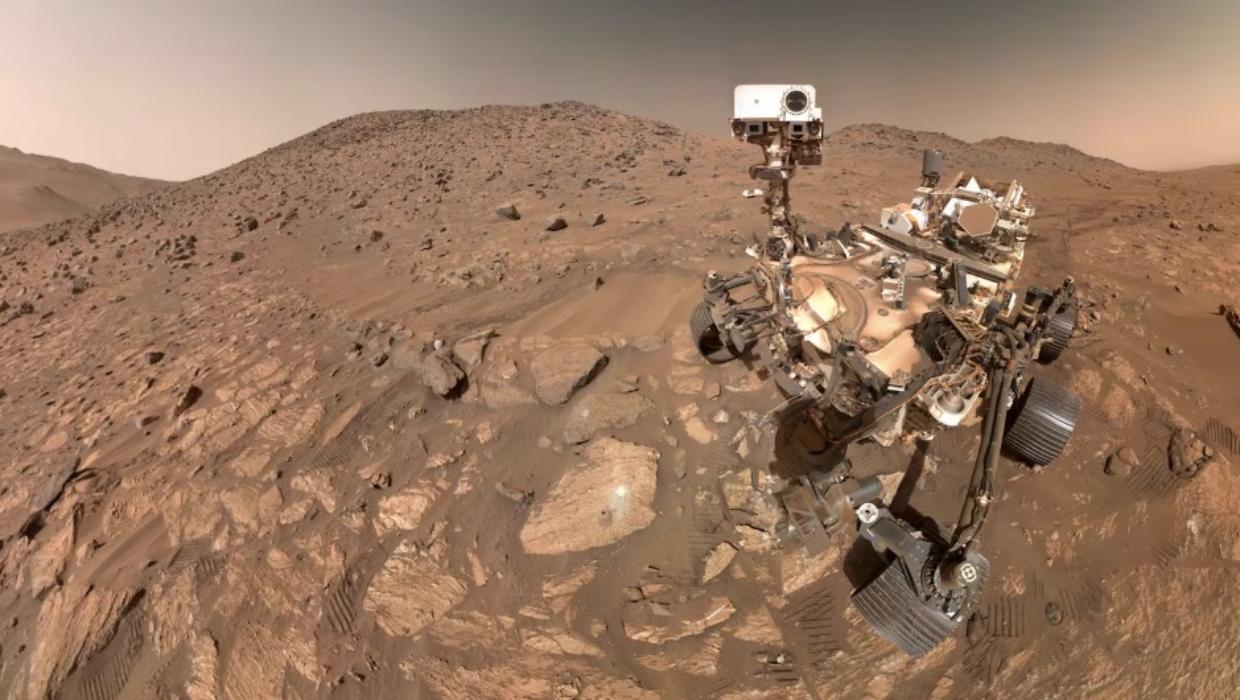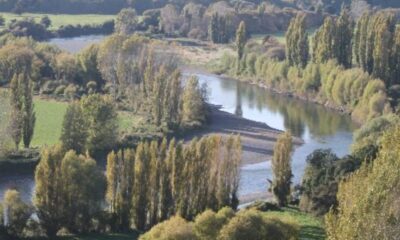Science
NASA Unveils Potential Biosignature in Mars Rock Analysis

NASA has announced a significant discovery that may indicate the presence of ancient life on Mars. Detailed analysis conducted on images captured by the Perseverance rover has revealed what scientists describe as a “potential biosignature” among the speckled rocks located in the Jezero Crater. This finding marks one of the clearest signs of life ever detected on the Martian surface.
The Perseverance rover has been exploring Mars since its landing in February 2021, primarily focused on searching for signs of past microbial life. The recent analysis of rock formations, which exhibit a unique speckled pattern, has prompted researchers to consider the possibility that these features could represent biological activity from billions of years ago.
Significance of the Discovery
The term “biosignature” refers to any substance or pattern that provides evidence of past life. According to NASA, this discovery could reshape our understanding of the planet’s history and its capacity to support life. The images analyzed were taken in the Jezero Crater, a site believed to have once harbored a lake, making it a prime target for the search for Martian life.
Dr. Ken Farley, the project scientist for the Perseverance mission, emphasized the importance of this finding. “The evidence is not definitive, but it is certainly compelling and warrants further investigation,” he stated. NASA plans to conduct additional tests to assess the geological and chemical characteristics of the rocks further.
The rover’s mission is not only to identify potential biosignatures but also to collect rock and soil samples for future return to Earth. These samples could provide critical insights into the planet’s past and any life forms that may have existed.
Next Steps in the Research
As researchers continue to analyze the data, they remain focused on the potential implications of these findings. If confirmed, this biosignature could significantly impact the scientific community’s understanding of life beyond Earth. The Perseverance rover is equipped with advanced tools capable of conducting in-situ analysis, allowing for a comprehensive examination of the Martian environment.
NASA has outlined plans for future missions to further investigate these promising leads. The next phase will involve selecting specific samples for collection and preparing for their eventual return to Earth. This effort is part of a broader strategy to unlock the secrets of Mars and answer the age-old question of whether we are alone in the universe.
In summary, NASA’s recent analysis of speckled rocks by the Perseverance rover suggests a potential biosignature on Mars. While more research is needed to confirm these findings, the discovery underscores the mission’s goal of uncovering the mysteries of the Red Planet and its history of life.
-

 World3 months ago
World3 months agoTest Your Knowledge: Take the Herald’s Afternoon Quiz Today
-

 Sports3 months ago
Sports3 months agoPM Faces Backlash from Fans During Netball Trophy Ceremony
-

 Lifestyle3 months ago
Lifestyle3 months agoDunedin Designers Win Top Award at Hokonui Fashion Event
-

 Sports3 months ago
Sports3 months agoLiam Lawson Launches New Era for Racing Bulls with Strong Start
-

 Lifestyle3 months ago
Lifestyle3 months agoDisney Fan Reveals Dress Code Tips for Park Visitors
-

 Health3 months ago
Health3 months agoWalking Faster Offers Major Health Benefits for Older Adults
-

 World3 months ago
World3 months agoCoalition Forms to Preserve Māori Wards in Hawke’s Bay
-

 Politics3 months ago
Politics3 months agoScots Rally with Humor and Music to Protest Trump’s Visit
-

 Top Stories3 months ago
Top Stories3 months agoUK and India Finalize Trade Deal to Boost Economic Ties
-

 Entertainment3 months ago
Entertainment3 months agoExperience the Excitement of ‘Chief of War’ in Oʻahu
-

 World3 months ago
World3 months agoHuntly Begins Water Pipe Flushing to Resolve Brown Water Issue
-

 Science3 months ago
Science3 months agoNew Interactive Map Reveals Wairarapa Valley’s Geological Secrets









